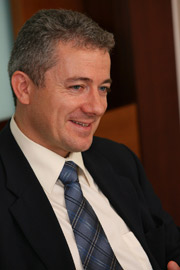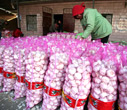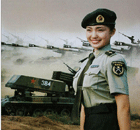Top Biz News
Moog anticipates continued growth in wind industry
(China Daily)
Updated: 2009-11-23 08:02
Moog Inc, a leading designer, manufacturer and integrator of high performance motion control components and systems, unveiled its latest solutions for the wind energy market at the recent Asian Wind Energy Exhibition. Moog is currently the world's only supplier of electric and electro-hydraulic blade pitch control, power and data transmission systems for the wind energy market.

Sean Gartland, Moog's general manager for the Asia-Pacific region. [File photo] |
In a recent interview with China Business Weekly reporter Zhang Qi, Sean Gartland, Moog's general manager for the Asia-Pacific region, shared his views about what the company foresees from the booming wind turbine sector despite the government's efforts to curb oversupply, and how the company maintains a 40 percent annual growth rate in China.
Q: Can you talk about how Moog has benefited from the emerging wind power industry since Moog came to China?
A: I think there are two factors today. One is that the wind energy market requires high performance motion control that is quite reliable. So controlling the motion of the blade and its reliability are very important. For example, if there is a fault in the system, the key part of our system is to close down the system safely so that the turbine does not fall out. Controlling the performance in normal operations and emergency shutdowns, these are two areas where reliability is very important. In the overall wind business, our products will enable our customers to improve their performance.
A: Overcapacity or not, I don't know. However even if the wind installations continue at the rate today for the next decade, they still account for only a small portion of the overall power. Maybe less than 10 percent of electricity will come from wind even it continues aggressive growth. So is that overcapacity? I am not sure.
We see this market as a growth market in which we will continue to innovate since the market requires increasingly sophisticated solutions that we can provide. We also see this market as the combination of equipment plus the grid system. Perhaps with the grid system, connectivity is the restricting point rather than the equipment. However, as I said, we are very optimistic about the continued growth of this market at a rate that will not be too different from that of today.
Q: What is Moog's market share in China?
Q: What is your investment plan or development plan in China?
A: At the moment we have a capacity for manufacturing 2,500 systems per year in our Shanghai facility. We are at the moment expanding that capacity in Shanghai.
We also have been looking at the possibility of establishing a second facility in Beijing in the future for the manufacture of pitch control systems. So over the next few years, it is reasonable to believe that we will manufacture in both Shanghai and probably Beijing.
We will also continue to invest in growing our engineering team and the support and service teams here in China.
From the Asia-Pacific perspective, we see China as the center of our wind turbine business for the region. So we plan to develop and manufacture wind turbine pitch control solutions in China for the Chinese market and for other countries such as Japan, India and Korea.
We have already done enough investigations into the Beijing market. We see this market as growing and positioned to grow faster, and we have already moved forward for that investment. So it could be in the one- to three-year period. I am hoping that in less than five years we will have a significant manufacturing presence in China. So we are not assuming that there is overheating in the China market.
Q: The price of wind turbines in China has been lowered by about 15 percent this year. Will Moog follow by reducing its prices?
A: First of all, quality is obviously essential in this business. There cannot be compromise on quality and reliability of the product. The purpose of a pitch control system is to maximize the power generated by controlling the blades and to close down the turbine in the case of an emergency or any turbine problem.
The second thing is, of course, that our goal is to remain cost-competitive, and we will continue to work to be more cost-competitive in this market.
Q: What do you expect Moog's growth rate to be next year?
A: I think next year's growth rate will be a bit slower but still be quite significant. I expect at least 20 percent. It could still be 40 percent. By percentage, it is slower, but in the number of wind turbines, that is still growing significantly. That is pretty healthy growth.













